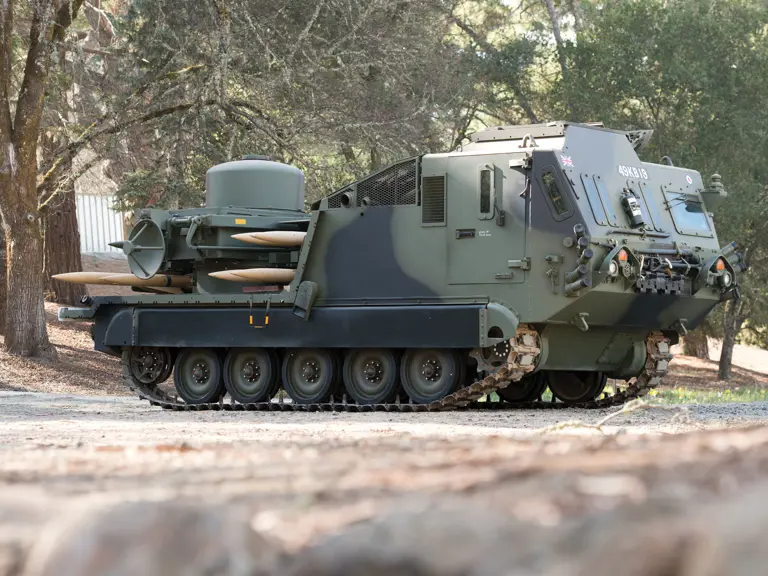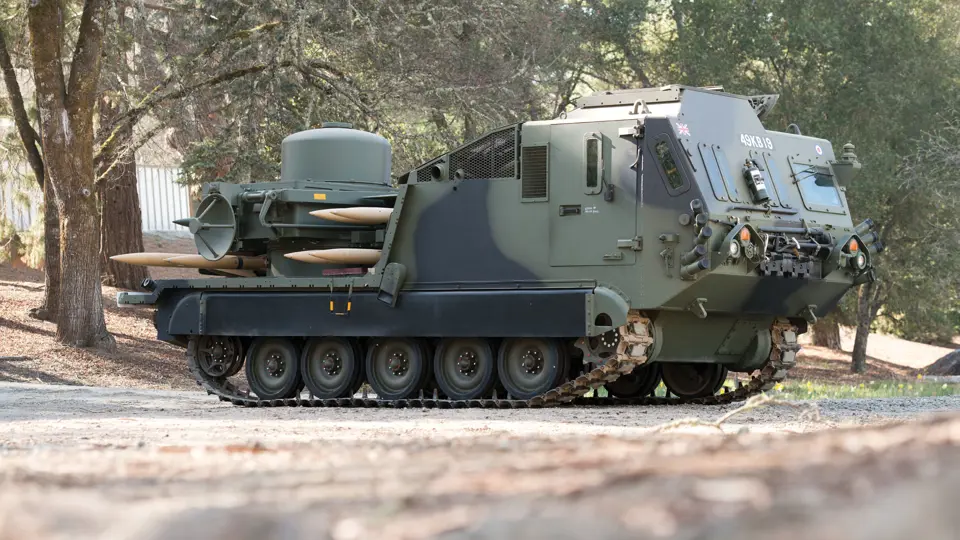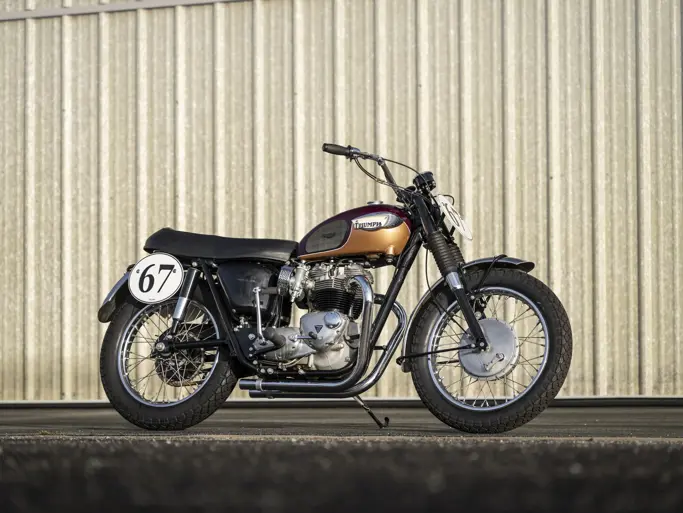 | Portola Valley, California
| Portola Valley, California
Weight: 15.4-tons (14,010-kg)
Length: 30’ (6.4-m)
Width: 8' 9” (2.69-m)
Crew: 3
Armor:
Proof against small arms
Weapons:
-Primary
8x Rapier anti-aircraft missiles
-Secondary
7.62-mm L7A2 machine gun
-Ammunition
2,000 x 7.62-mm
Engine: 5.2-liter V-6 diesel, 210-hp
Power/weight: 13.6-hp/ton
Fuel Capacity: 105-USG (398-l)
Range: 185-miles (300-km)
Speed: 30-mph (48-km/h)
The vehicle being offered, Tracked Rapier, vehicle serial number 78652, was built by FMC. It is in excellent all around condition. The exterior paint is excellent. All exterior lights are present. All doors and hatches open and close normally. It runs and drives well using fuel from its own tanks. The interior is excellent and appears complete.
Both the British Army and the Royal Air Force is equipped with Rapier. This vehicle is marketed as one of the RAF’s systems, as is evident by the roundel above the driver’s windshield. This vehicle carries the Mk1E version of the missile, which has replaced the original contact fuse with a more conventional proximity fuse. Analysis of the unexpectedly poor performance in the Falklands concluded that having the small warhead (which allowed the small missile) would probably cause damage better than one which would likely shoot down an aircraft in the rarer events that it hit.
Rapier is a small anti-aircraft missile developed in the 1960s and entering service with the British Army in 1971. This fixed site defense missile, which was originally only optically guided, was judged to be so accurate that it was equipped with a contact fuse instead of the proximity fuse common to most anti-aircraft weapons. BAe (British Aerospace) advertised it as “The Hittile”.
The system was originally a towed one, with four missiles mounted on a launch trailer towed by a Land Rover, with another trailer mounting a search radar with interrogation (IFF-Identification Friend of Foe) capability. A radar named “Blindfire” was developed for operation in weather conditions which did not permit visual engagement, this could also be towed behind a Land Rover.
The system achieved moderate export success with sales to a dozen countries. In 1974, the Iranian military put a request for a self-propelled version of Rapier to provide anti-air protection for its armored formations. As Iran was already a user of the American M113, and as the M113-based cargo carrier M548 proved to be simple enough to mount a platform onto, BAe basically bolted the Rapier system to the M548’s flatbed and replaced the crew cab with an armored operators compartment. With the fall of the Shah, they were never delivered, and the British took over the vehicles.
Now mounted on a tracked vehicle, the launcher was enlarged to mount eight missiles. The system could engage a target in optical mode within 30-seconds of stopping, but to engage with Blindfire would take longer as the radar would be carried on a different vehicle, which would need to be linked to the launching vehicle.
Towed Rapier saw service in the 1982 Falklands War, achieving relatively limited success, shooting down no more than five Argentine aircraft. Tracked Rapier was withdrawn from UK service in 1988, but the towed variant is scheduled to remain in service until 2020. Despite having been removed from the inventory, Tracked Rapier was briefly returned to service in 1992 to accompany British armored units in operation Granby, the Iraq war, with vehicles being brought back from museum and monument duty. The system has since been replaced by Starstreak mounted on Stormer APCs.
Transport Cost to Storage: $1,848





